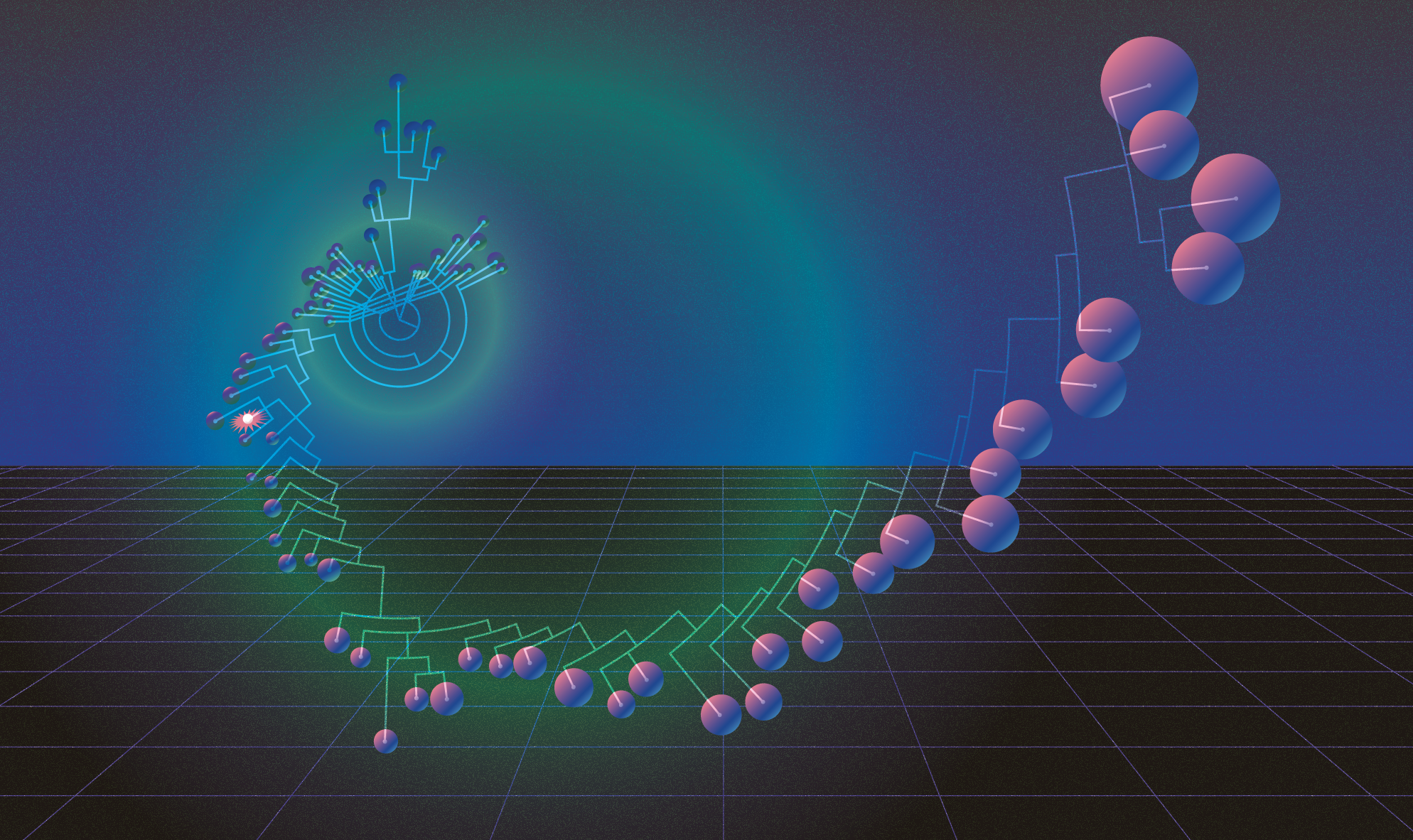From 2019 to 2021, I developed pipelines to generate phylogenetic trees and map the chemical evolution of stars in the galaxy based on their elemental makeup. I collaborate with Dr. Paula Jofré of the University of Diego Portales in Santiago, Chile.
Most recently, we’ve built a family tree of the Milky Way, featured in the MIT News.
 A stylized version of a stellar evolutionary tree from our most recent publication. Picture design by Carolina Jofré.
A stylized version of a stellar evolutionary tree from our most recent publication. Picture design by Carolina Jofré.
Publications
Using heritability of stellar chemistry to reveal the history of the Milky Way
Holly Jackson, Paula Jofré, Keaghan Yaxley, Payel Das, Danielle de Brito Silva, Robert Foley
Monthly Notices of the Royal Astronomical Society, 2021
Abstract
Since chemical abundances are inherited between generations of stars, we use them to trace the evolutionary history of our Galaxy. We present a robust methodology for creating a phylogenetic tree, a biological tool used for centuries to study heritability. Combining our phylogeny with information on stellar ages and dynamical properties, we reconstruct the shared history of 78 stars in the solar neighbourhood. The branching pattern in our tree supports a scenario in which the thick disc is an ancestral population of the thin disc. The transition from thick to thin disc shows an anomaly, which we attribute to a star formation burst. Our tree shows a further signature of the variability in stars similar to the Sun, perhaps linked to a minor star formation enhancement creating our Solar system. In this paper, we demonstrate the immense potential of a phylogenetic perspective and interdisciplinary collaboration, where with borrowed techniques from biology we can study key processes that have contributed to the evolution of the Milky Way.
Traits for chemical evolution in solar twins, Trends of neutron-capture elements with stellar age
Paula Jofré, Holly Jackson, Marcelo Tucci Maia
Astronomy & Astrophysics, 2020
Abstract
The physical processes driving chemical evolution in the Milky Way can be probed using the distribution of abundances in low-mass FGK type stars in space phase at different times. During their final stages of evolution, stars experience nucleosynthesis several times, each at different timescales and producing different chemical elements. Finding abundance ratios that have simple variations across cosmic times therefore remains a challenge. Using the sample of 80 solar twins for which ages and abundances of 30 elements have been measured with high precision, we searched for all possible abundance ratio combinations that show linear trends with age. We found 55 such ratios, all combining an n-capture element and another element produced by different nucleosynthesis channels. We recovered the ratios of [Y/Mg], [Ba/Mg], and [Al/Y] that have been reported previously in the literature, and found that [C/Ba] depends most strongly on age, with a slope of 0.049 ± 0.003 dex Gyr−1. This imposes constraints on the magnitude of the time dependency of abundance ratios in solar twins. Our results suggest that s-process elements, in lieu of Fe, should be used as a reference for constraining chemical evolution models of the solar neighbourhood. Our study illustrates that a wide variety of chemical elements measured in high-resolution spectra is key to meeting the current challenges in understanding the formation and evolution of our Galaxy.
Book Features
TODO


